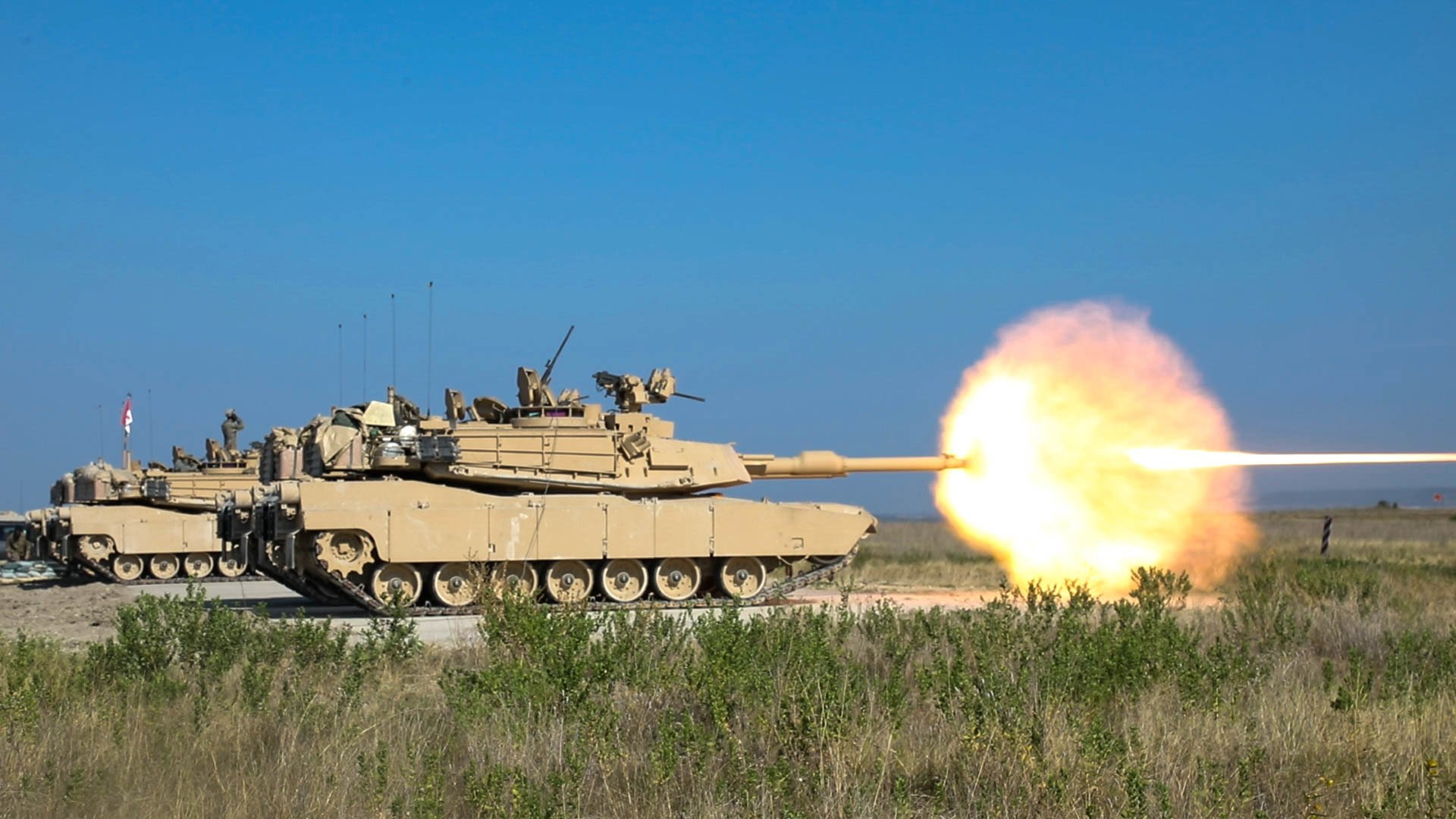
Upgrades to the Abrams tanks were reduced in the Army’s budget. (Sgt. Calab Franklin/US Army)
WASHINGTON: For the last several years, Army leaders have employed a range of phrases to describe how much room the service had to cut its fleet of older platforms to fund its modernization — ranging from “big fish are fished out of the pond” to a “few small, scrawny apples way up in the top.”
In its fiscal 2023 budget request, the Army climbed to the top of the tree. The service’s FY23 budget request again reduces its funding ask for Abrams and Stryker upgrades, instead pushing that money towards its 35 core modernization priorities.
The Defense Department’s budget overview shows that it asked for $700 million for upgrades to 22 M1 Abrams tanks, down from 70 in its FY22 request and 90 that Congress allocated. For Stryker upgrades, it shows that it asked Congress for 102 vehicles to be funded at $700 million, a reduction from 187 vehicles in its FY22 ask and the 228 that Congress appropriated for the service.
The service also asked for funding for 27 Paladins, a decrease from the FY22 enacted of 43 (though up from 25 in last year’s budget request), yet another example of an older platform taking a hit in the budget. However, Doug Bush, assistant secretary of the Army for acquisition, logistics and technology, insisted that despite the cuts, all the accounts associated with heavy units are funded at a “healthy” level.
The cuts were “done prudently and I think we’ve maintained levels that are sufficient for the industrial base to keep it healthy,” Bush said. “But that is the classic kind of balancing act to do when you’re going through a modernization cycle — it’s, when do you start cycling a little bit of money off enduring programs to start creating headspace for the new thing?”
“We’re keeping an eye on where the floors are, because there’s a supplier base, for example, underneath the primes that we have to also be aware of,” Bush added. “And I don’t believe we’ve gone under any of those floors.”
Related: Army’s $177.5B budget request will ‘maintain’ momentum on modernization, but cuts vehicle buys
Within the Army’s overall budget of $177.5 billion, it asked for $21.3 billion in procurement funds, a $1.5 billion dip from the $22.8 billion Congress enacted. Among the notable pots of money:
- The “other procurement” bucket saw the biggest reduction from the enacted FY22 levels, with a total drop of $900 million. That portfolio includes a broad range of items, including combat service support equipment and training equipment.
- The Weapons and Tracked Vehicles category also saw a significant reduction of about $700 million, with the service planning reductions in spending on M1 Abrams tanks upgrades, Stryker updates and Paladins to protect the Army’s modernization portfolio. The Army had to make that “conscious choice” to reduce funding levels for those programs, Bush said.
- The service’s aircraft account also sees a $500 million reduction from congressional appropriations, down to $2.8 billion. The service plans to buy 25 UH-60M Black Hawk helicopters, down from the 33 Congress funded for FY22. However, the service asked for 35 AH-64E Apaches, up from 29 in the appropriations package.
The DoD budget overview also shows the Army plans to to spend $1.1 billion 3,721 Joint Light Tactical Vehicles and associated trailers, up from 2,744 it received from Congress in FY22.
The good news for the Army is that even as legacy platforms take a procurement hit, new capabilities are expected to transition from R&D to full-fledged procurement efforts in FY23.
The service asked Congress for funding to purchase 72 Armored Multi-Purpose Vehicles, designated to replace the service’s legacy fleet of M113s, though spending amounts weren’t available. The Army also asked Congress to fund five more Mobile Protected Firepower vehicles, the service’s new light tank, than in FY22, bringing the total to 28 MPFs. The Next-Generation Squad Weapon, another top modernization priority, is funded in the Army’s budget request for 29,046, up from 12,217 in the FY22 enacted.
Bush said that the budget’s future years projections will show the Army’s plans to fielding of its other modernization programs that are starting to mature. The Army boasts that 24 of its 35 modernization priority programs will be in soldiers’ hands for prototyping in fiscal 2023.
“You will also see across the FYDP other programs and where they’re going to come and laying into full units actually getting real capability,” Bush said.
The service asked Congress for $300 million over the FY22 enacted for its missiles budget, bringing that total to $3.8 billion. The service plans to buy 120 Precision Strike Missiles, a top modernization priority, an increase from 110 in the FY22 enacted. It also wants Congress to fund 252 Missile Segment Enhanced, a new missile for the Army’s Patriot missile system, up from 180 in the Army’s enacted budget for this year.
The service budget overview says ramp-ups for PrSM and MSE will “accommodate changes in the operational environment and provide critical munitions for combatant commanders.






















